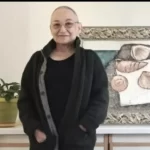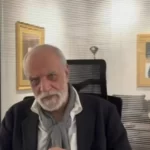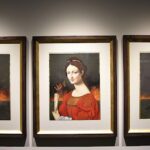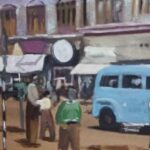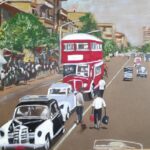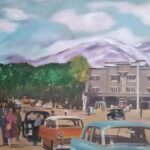
These days, Tehran is hosting one of the greatest names in art history: Pablo Picasso. The Tehran Museum of Contemporary Art, which itself houses a remarkable collection of modernist masterpieces, has now become the focal point for art enthusiasts with an exhibition showcasing works by this Spanish genius. But before delving into the critique of two of Picasso’s notable works, let’s take a closer look at the museum and its role in contemporary Iranian art.
Tehran Museum of Contemporary Art: A Treasure in the Heart of the Capital
Located on North Kargar Street, adjacent to Laleh Park, the Tehran Museum of Contemporary Art is one of the most significant institutions preserving and displaying modern art in the Middle East. Established in 1977, the museum boasts a distinctive architecture inspired by traditional Persian windcatchers. What truly sets this museum apart from others in the region is its permanent collection, a priceless treasury featuring works by Van Gogh, Pollock, Dalí, Giacometti, Rothko, Magritte, and of course, Picasso.
With Picasso’s works now on display in this museum, art lovers have the opportunity to witness his unparalleled genius up close. Among the exhibited pieces, two works—”La Tauromaquia” and “The Art of Bullfighting”—stand out, drawing significant attention. These two pieces reflect Picasso’s lifelong fascination with the theme of bullfighting and its symbolic violence, a motif recurring throughout his artistic career.
La Tauromaquia: Violence in Lines
“La Tauromaquia” is a piece where Picasso employs the linocut printing technique to depict a bullfighting scene. Through broken lines, deep shadows, and a tense composition, the viewer is transported directly into the bullring. In this work, Picasso not only showcases his graphic mastery but also captures the brutal and tragic essence of bullfighting in its rawest form. The contrast between light and darkness in this piece mirrors the eternal duel between life and death in the bullring, a drama that always fascinated him.
The Art of Bullfighting: A Display of Brutality and Grandeur
In “The Art of Bullfighting”, Picasso takes a more abstract approach to this Spanish tradition. Here, he employs minimalistic forms, yet the tension, excitement, and power remain vividly present. At first glance, the piece might seem simple, but a closer look reveals an underlying rhythm of intensity and concealed violence within the strokes and color contrasts. This work does not merely depict bullfighting as a sport or tradition but rather as a ritualistic act, where death and glory intertwine.
Picasso: Always in a Frenzy of Innovation
Picasso was an artist who never confined himself to a single style or technique. From Cubism to Realism, from ceramics to printmaking, from drawing to sculpture, he was always in pursuit of new ways to express his artistic vision. In works such as “La Tauromaquia” and “The Art of Bullfighting,” we witness this relentless exploration—a constant discovery that made Picasso one of the most influential artists of the 20th century.
Now that this exhibition provides Iranian audiences with a rare opportunity to engage directly with some of his masterpieces, one might wonder about the impact of this event on the country’s art scene. Picasso has come to Tehran—but are we ready to grasp his worldview?
* H0ura Khakdaman / Curator and Art Critic
article links:

